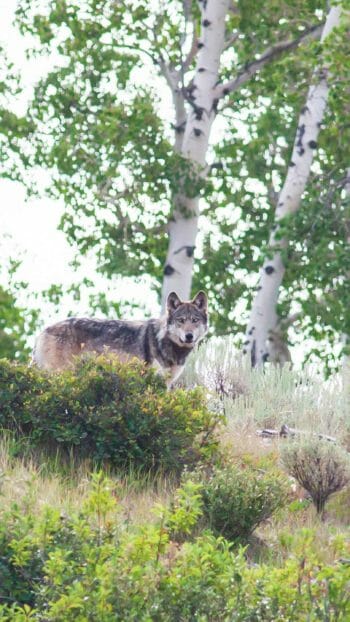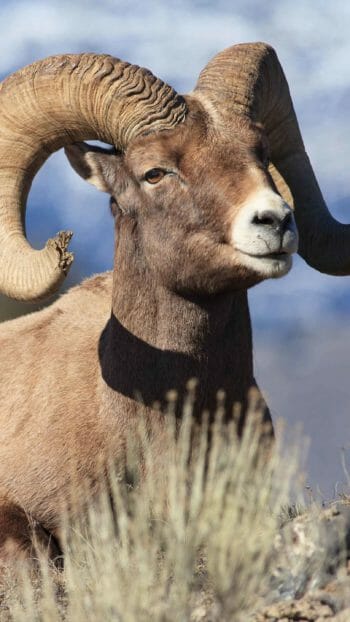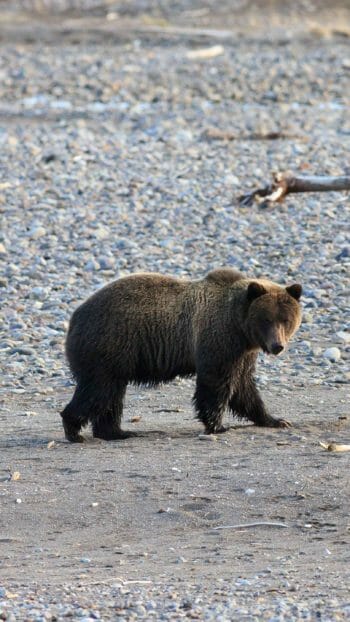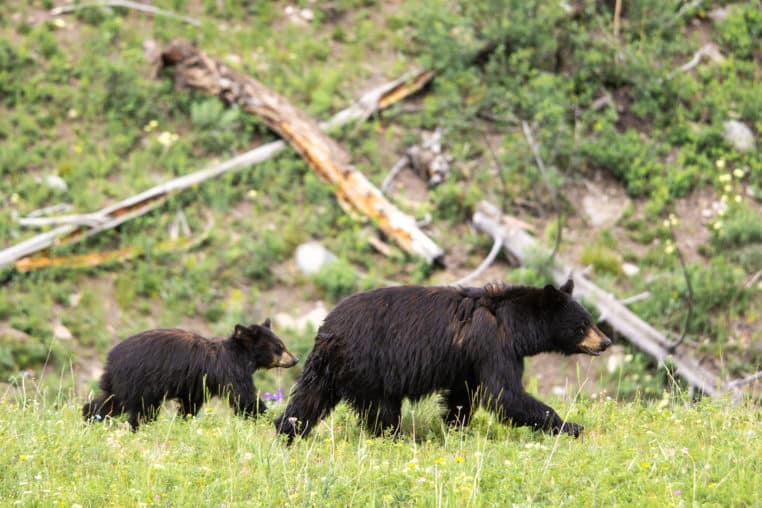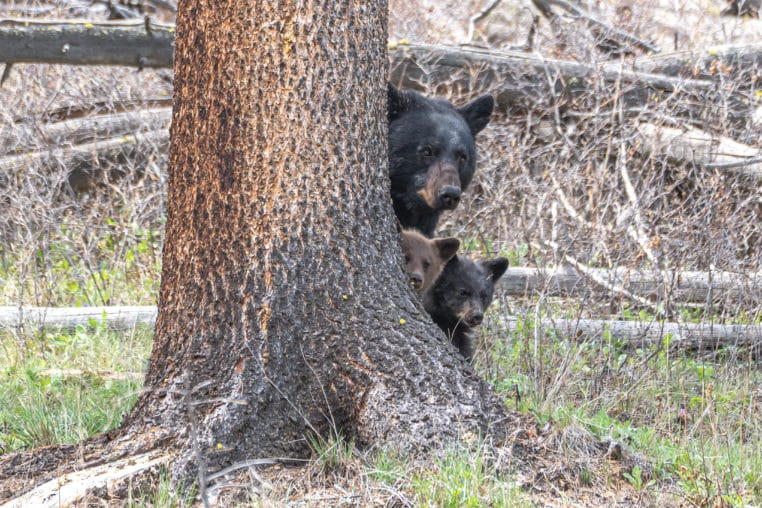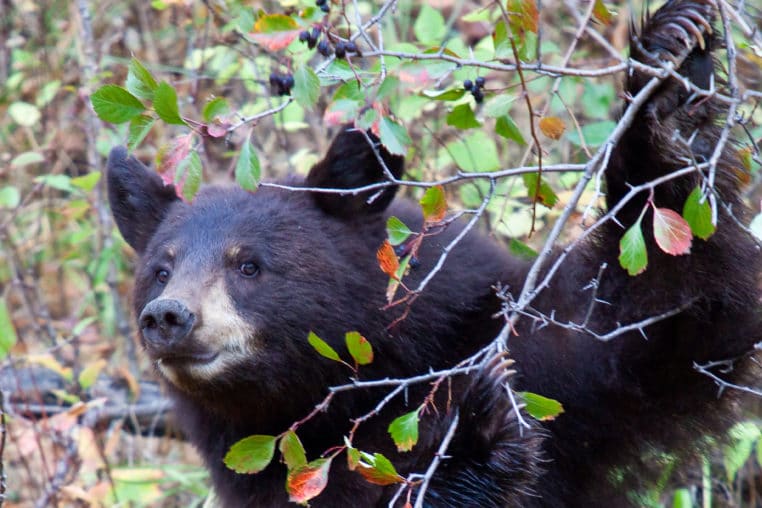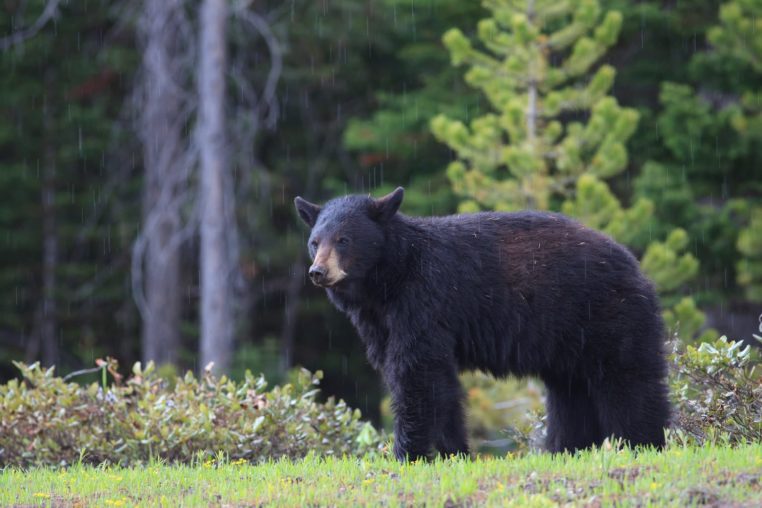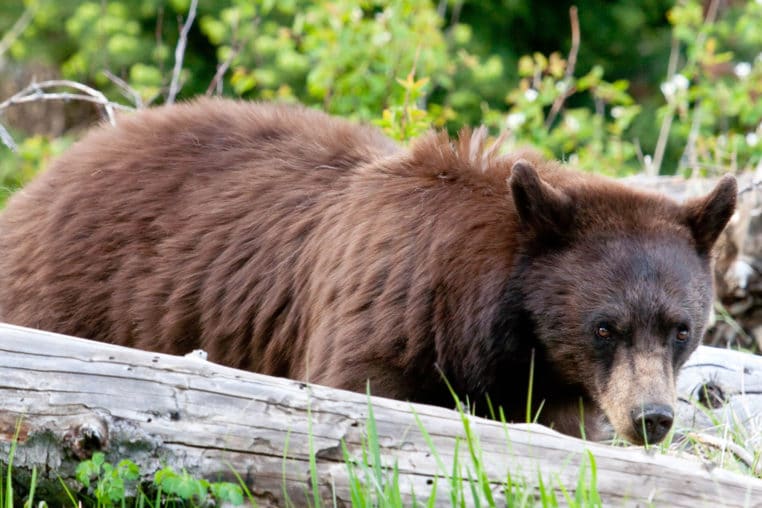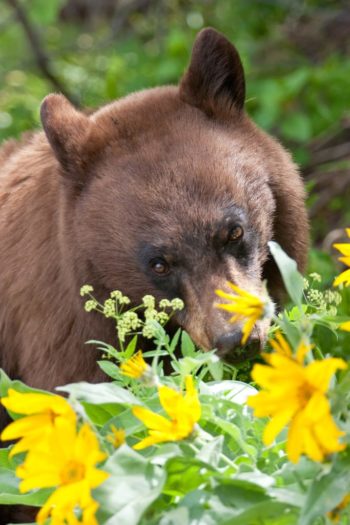
Ursus americanus
The American black bear is the more common of the two bear species found in the Greater Yellowstone Ecosystem. Although smaller than grizzlies, black bears are adaptable, resourceful, and an exciting wildlife sighting for visitors to Yellowstone and Grand Teton National Parks. Despite their name, they are not always black- they can be dark brown, light brown, or even blonde. These brown black bears are known as “cinnamon phase black bears”. With these color variations, they are often confused with grizzlies.
Wildlife Viewing
- Yellowstone
Book Online
Watch For Wildlife On These Tours
About
Size and Appearance
Yellowstone’s black bears are relatively small compared to coastal populations. Females typically weigh 90–180 pounds, while males can reach 600 pounds. Despite their name, black bears are not always black—their coats can range from cinnamon brown to jet black, and even blonde. Unlike grizzlies, black bears lack a muscular shoulder hump and have shorter, more curved claws.
Diet and Behavior
Like grizzlies, black bears are omnivores. Up to 80% of their diet is vegetation, including berries, grasses, and roots, but they will also eat insects, carrion, and occasionally small mammals. They are highly opportunistic and may scavenge near human activity, which makes them especially vulnerable to food conditioning. The saying “A fed bear is a dead bear” is a reminder that feeding wildlife endangers both animals and people.
Reproduction and Hibernation
Black bears also exhibit delayed implantation, with cubs born in winter dens weighing just a few ounces. Mothers fiercely protect their cubs, raising them until they are old enough to survive on their own. In fall, black bears experience hyperphagia, feeding constantly to gain the fat reserves they need for denning. While not true hibernators, they sleep through the coldest winter months and emerge in spring ready to forage.
How to Tell a Black Bear from a Grizzly Bear
Black bears are sometimes mistaken for grizzlies, but several features set them apart. Black bears lack the muscular shoulder hump that is characteristic of grizzlies. Their faces are generally straighter in profile, their ears are taller and more pointed, and their claws are shorter and more curved, making them excellent climbers. Coat color can vary from jet black to cinnamon or blonde, so color alone is not a reliable indicator. Instead, look for ear shape, face shape, and the absence of a shoulder hump when identifying a black bear in Yellowstone or Grand Teton.
Best Times to See Black Bears
The best seasons to spot black bears in Yellowstone and Grand Teton are spring and fall. In spring, they are active in lower elevations where food sources are first available, and in autumn they can be seen foraging along meadows, treelines, and berry patches. Black bears are more commonly spotted than grizzlies, making them a frequent highlight for wildlife watchers.
Remember to stay 100 yards away from bears, and to never feed the wildlife.
FAQs
How big are black bears in Yellowstone?
Black bears in Yellowstone are generally smaller than their coastal relatives. Females usually weigh 90–180 pounds, while males can reach up to 600 pounds. Despite their name, their coats can range in color from cinnamon brown to jet black.
How can you tell the difference between a black bear and a grizzly bear?
Black bears lack the muscular shoulder hump that defines a grizzly. They also have a straighter facial profile, shorter claws that are more curved, and taller, more pointed ears. Color alone is not reliable, as black bears can also be brown or cinnamon.
What do black bears eat in Yellowstone and Grand Teton?
Black bears are omnivores with diets that include berries, grasses, roots, insects, carrion, and occasionally small mammals. Up to 80% of their food intake is plant-based, though they are opportunistic and will take advantage of whatever resources are available.
When is the best time to see black bears in Yellowstone and Grand Teton?
Black bears are most visible in spring and fall. In spring, they forage at lower elevations as they emerge from their dens. In fall, they enter hyperphagia, spending most of their time eating in preparation for winter denning.
Are black bears dangerous to humans?
Black bears are generally shy and avoid people, but they can become dangerous if they are food-conditioned or surprised at close range. This is why strict food storage rules exist in Yellowstone and Grand Teton. Giving bears space and never feeding them helps keep both visitors and wildlife safe.
Further Reading
Routine of Yellowstone Bears
Apr 1, 2023
Eight species of bears can be found around the globe, varying in sizes from 60 lbs to almost 1,000 lbs, from four feet to eight feet tall, inhabiting ecosystems of varying climates. Here in Yellowstone, we have our very own subspecies of the brown bear, famously known as the grizzly bear…
Summer Wildlife: Grizzly Bears, Bison, and More
Mar 25, 2023
Lamar Valley is often and accurately described as the American Serengeti. If you’re looking for a landscape where you feel surrounded by possibilities of once-in-a-lifetime Yellowstone wildlife encounters, this is it. Heavily peppered with bison, regular elk herds moving through, a shy moose by the treelines, both grizzly and black bears, and wolves in their element…

